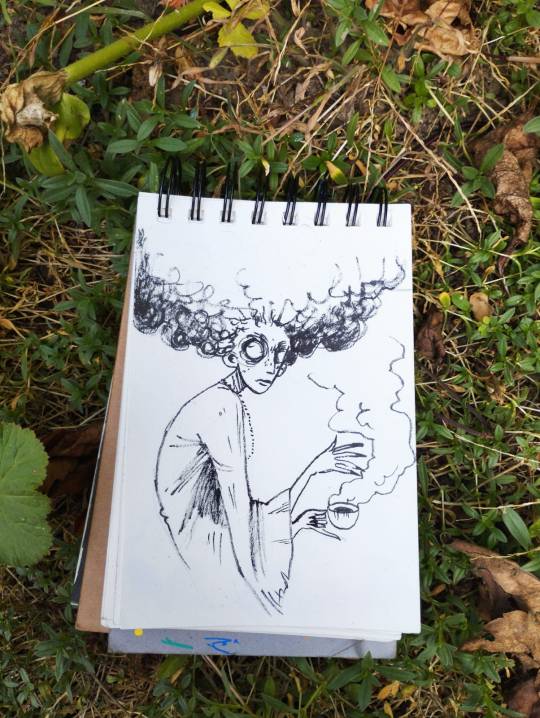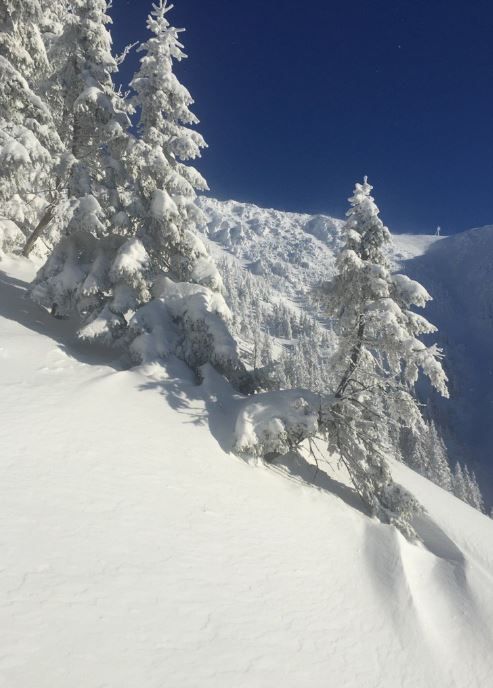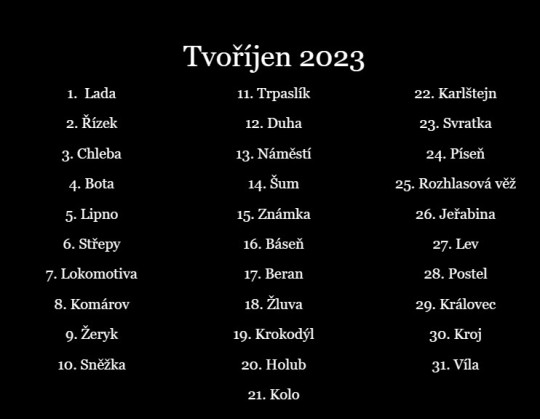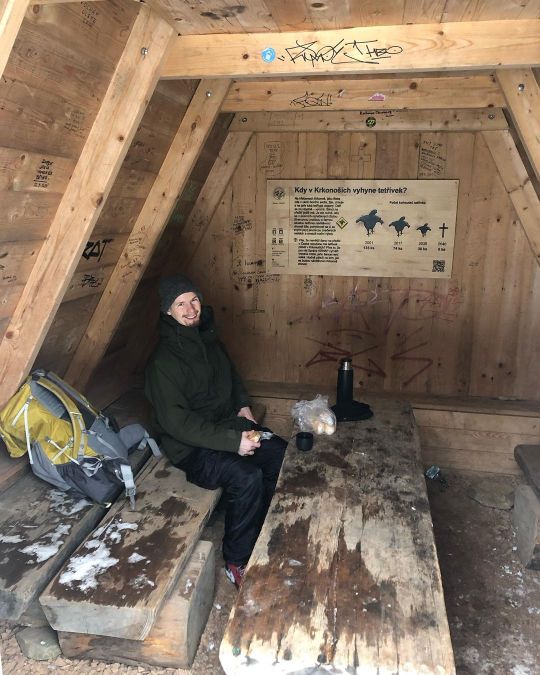#sněžka
Text


@kitikara TRPASLÍK a SNĚŽKA, DUHA



@kocourmokroocko DIVADLO V KONTEJNERU, JEZINKA S HRNKEM KAFE a V TOMTO DOMKU BYDLÍ ŽÁBA
#Sněžka#Trpaslík#Duha#Divadlo v kontejneru#Jezinka s hrnkem kafe#V tomto domku bydlí žába#Tvorijen#Tvoříjen#tvoříjen 2023#my art#Cumblr#Čumbler
14 notes
·
View notes
Text

10.10.2023 Sněžka a jsem s tím zatraceně spokojená.
0 notes
Note
I saw your screenshot talking about how czech tourists are dumb, and now I'm very curious as to why? I feel like those are problems with tourists in general sometimes
we are not dumb in the way most tourists are, we are special little boys. most tourists act dumb because they don't do enough research - if they did they would reconsider. we on the other hand can do however much research we want yet we will always choose the worst course of action. not only are we underprepared and overconfident, we are underprepared and overconfident intentionally. there are no rational thoughts in our head, only ego and spite.
when we go to tatry, we understand the language of the locals (although it is silly goofy) and we do talk to them about the mountains and what to wear, where to go, but when they tell us that you need proper gear and not to stray off path, we chuckle and intentionally try to prove them wrong. silly locals! they don't know you can climb ďumbier in the winter in one day, wearing the godawful checkerboard shorts, sandals and socks and with a big tesco bag in hand. and ofc we can't forget the fanny pack of good luck. we have been to sněžka before (in the summer, went by cableway, stayed for 30 minutes), we know what mountains are like. the locals tell us that's not the same, we know nothing about actual mountains and we will die? no we won't, it's fine. there is a clearly marked path? oh but i think this way is gonna be a shortcut! there's a fence stopping us from going to the nice panorama view spot? haha fences are meant to be climbed over.
that is how tatry got the nickname "biggest czech graveyard"
you can imagine what happens when we go to the alps and don't understand the locals
(i invite every czech and every person that has experience with czech tourists to reblog and add their personal experience)
#more seriously i think it's because czechia is very... mellow in terms of it's landscape and natural conditions#we don't have proper mountains so when we go to proper mountains we suppose it's just like our little hills#we don't have sea so when we go to the sea we suppose it's just like our lakes#and we statistically have higher injure rates than other nations#honestly i might write a paper on this for school one day lol#czech
185 notes
·
View notes
Text
EVEREST Z TLAPKOVÉ PATROLY SE MĚLA V ČESKÉM DABINGU JMENOVAT SNĚŽKA
#czech#česky#čumblr#obrození#tlapková patrola#hádejte kdo sledoval tlapkovou patrolu spolu s tříletým bratrem své kamarádky aby jí bratr nelezl do koupelny#jinak jan maxián snědl jako vždy#ale je divný že v tom vesmíru psi umí mluvit a kočky ani jiná zvířata ne
105 notes
·
View notes
Text
Hele co jsem dostala! Ty nejčeštější samolepky!
🤍❤️💙

Oštítkuj se, já jsem Sněžka a koláč 🥰
(nejsem si úplně jistá, co má být rozhledna vpravo dole, jinak vše chápu a miluju!)
(zejména by se mohlo líbit @ahojojoj 😊)
145 notes
·
View notes
Text

21 Facts about the 𝗖𝘇𝗲𝗰𝗵 𝗥𝗲𝗽𝘂𝗯𝗹𝗶𝗰:
1. The Czech Republic was formed in 1993, following the peaceful split of Czechoslovakia in what is known as the Velvet Divorce.
2. The country is home to over 2,000 castles, making it one of the highest densities of castles in the world.
3. Prague, the capital city, is home to the largest ancient castle in the world, Prague Castle, according to the Guinness Book of World Records.
4. The Czech Republic is the birthplace of the world-famous Pilsner lager, originating from the city of Plzeň (Pilsen) in 1842.
5. The country has a long tradition of puppetry and marionette exhibitions. Puppetry was added to UNESCO's list of Intangible Cultural Heritage in 2016.
6. The Gregor Mendel, the founder of genetics, was born in 1822 in what is now the Czech Republic.
7. The Czech Republic ranks as one of the top countries in terms of beer consumption per capita. The tradition of brewing dates back to the 10th century.
8. The currency used is the Czech koruna (CZK), as the country has not adopted the Euro.
9. The Charles University in Prague, established in 1348, is one of the oldest universities in the world.
10. The traditional Christmas dinner in the Czech Republic often includes carp, which families sometimes keep alive in their bathtubs before preparing it for the meal.
11. The Czech Republic is the birthplace of the renowned Art Nouveau artist Alphonse Mucha.
12. The country's landscape is quite diverse, including bohemian paradise's rock cities, Moravian karst caves, and mountain ranges like the Krkonoše, home to the highest peak in the country, Sněžka.
13. The Czech Republic is known for its spa towns, including Karlovy Vary, Mariánské Lázně, and Františkovy Lázně, attracting visitors seeking relaxation and therapeutic treatments.
14. The Moravian Karst, a protected nature reserve in the eastern part of the Czech Republic, features more than 1,000 known caves and gorges.
15. The Velocipedes Museum in Česká Třebová is one of the world's largest museums dedicated to bicycles and motorcycles.
16. The Czech language belongs to the West Slavic group of languages and is known for its challenging pronunciation and grammar.
17. Traditional Czech glassmaking and crystal production have a long history, with Bohemian crystal being highly prized worldwide.
18. The Olomouc cheese, known as Olomoucké syrečky or tvarůžky, is a smelly, aged cheese from the region of Olomouc, famous throughout the country.
19. The Czech Republic has a significant tradition of animation and film, with filmmakers like Jan Švankmajer gaining international acclaim.
20. Kutná Hora, a town in the Czech Republic, is home to the Sedlec Ossuary, a small Roman Catholic chapel, adorned with decorations made out of human bones.
21. The Czech Republic was the first former Eastern Bloc state to gain developed economy status according to the World Bank, showcasing its successful transition from a state-controlled economy to a market-driven one.
#czech republic#ancestors alive!#what is remembered lives#memory & spirit of place#ancient ways#sacred ways#folkways#traditions
2 notes
·
View notes
Text

Sněžka, Czechia
2 notes
·
View notes
Text


Die Schneekoppe (tschechisch Sněžka, polnisch Śnieżka, auch Riesenkoppe oder nur Koppe genannt) ist mit 1603,2 m n.m. die höchste Erhebung des Riesengebirges.
Mountain between Poland & Czech Rep., highest in Sudety mountains.
#Schneekoppe#Śnieżka#Snezka#litho#pocztówka#litografia#kartka#post card#gruss aus#poland#polska#Czechy#Czech#czechia#czech republic
0 notes
Text










Humble brag, me and my sister just hiked up and down the tallest mountain in Czechia - Sněžka (1603 meters above sea level)
1 note
·
View note
Text
Schneekoppe/Sněžka
Karpacz, Woiwodschaft Niederschlesien, Polen
View On WordPress
0 notes
Text

@kitikara maminka se konečně rozhodla alespoň jednou kresbou zapojit do Tvoříjna TRPASLÍK a SNĚŽKA
10 notes
·
View notes
Text
Tvoříjen 2023 - verze Kitikara

V rámci října to bude veselé a tady je můj seznam.
Lada
Řízek
Chleba
Bota
Lipno
Střepy
Lokomotiva
Komárov
Žeryk
Sněžka
Trpaslík
Duha
Náměstí
Šum
Známka
Báseň
Beran
Žluva
Krokodýl
Holub
Kolo
Karlštejn
Svratka
Píseň
Rozhlasová věž
Jeřabina
Lev
Postel
Královec
Kroj
Víla
19 notes
·
View notes
Text
The Czech Republic is home to some of the most stunning mountain ranges in Europe and they are a must-see for any outdoor enthusiast. From the spectacularly beautiful Krkonose Mountains in the north to the rolling hills of the Bohemian Paradise in the south, the Czech Republic is full of breathtaking views and challenging hikes.
Located in the north of the Czech Republic, the Krkonose Mountains are the highest mountain range in the country. The highest peak is Sněžka, which stands at a staggering 1,603 meters above sea level. The Krkonose Mountains are a popular destination for both locals and tourists alike, offering hiking, skiing and camping opportunities.
The Bohemian Paradise is another beautiful mountain range located in the north of the country. This area is known for its tranquil landscape and stunning views of forests and rivers. The highest peak in the Bohemian Paradise is Ještěd, which stands at an impressive 1,012 meters above sea level. The Bohemian Paradise is a popular destination for hiking, mountain biking, rock climbing and canoeing.
The Šumava Mountains are located in the south of the Czech Republic and are the second highest mountain range in the country. This area is known for its thick forests and picturesque views. The highest peak in the Šumava Mountains is Plechý, which stands at an impressive 1,378 meters above sea level. The Šumava Mountains are a popular destination for hiking, skiing, snowshoeing and cycling.
The Beskydy Mountains are located in the east of the Czech Republic and are the third highest mountain range in the country. This area is known for its lush forests and spectacular views of the surrounding countryside. The highest peak in the Beskydy Mountains is Lysá hora, which stands at an impressive 1,323 meters above sea level. The Beskydy Mountains are a popular destination for hiking, camping, skiing and snowboarding.
The Krkonoše National Park is located in the north of the Czech Republic and is the fourth highest mountain range in the country. This area is known for its stunning views of the surrounding countryside and its various wildlife. The highest peak in the Krkonoše National Park is Sněžka, which stands at an impressive 1,603 meters above sea level. The Krkonoše National Park is a popular destination for hiking, camping, skiing and snowshoeing.
Overall, the Czech Republic is home to some of the most stunning mountain ranges in Europe and they are a must-see for any outdoor enthusiast. Whether you're looking for a challenging hike, a peaceful view or an adrenaline rush, the Czech Republic has something for everyone.
0 notes
Photo

Marek is nice and cozy on our backcountry trip on Sněžka. Little did we know that the wind on mountain ridge will blow 70 km/h, which was no problem for Marek but Ili got sh*t scared. Marek did kinda save the day by being the calmest mountain hero and we made it home all fine. Today is sauna-day. 🌬️🌬️🌬️❄️ #snezka #backcountry #backcountryskiing #adventure #couplegoals (at Pec Pod Sněžkou, Krkonoše) https://www.instagram.com/p/CojmguNjoGj/?igshid=NGJjMDIxMWI=
0 notes
Text





Sněžka
Meteorological Mountain Observatory
Czech Republic/Poland
Christian Kneise
Published on: 01/02/2023
Source: behance.net
0 notes
Text
Pronto mejorará el tiempo y será el momento de pensar en viajes por la República Checa, o en dónde pasar unas vacaciones en la República Checa para redescubrir su belleza. Como conocer las montañas de Krkonoše en Chequia.
Con el artículo de hoy empiezo una serie de consejos sobre dónde ir en la República Checa. Tanto a lugares a los que no va mucha gente como a lugares muy conocidos.
Personalmente, me encantan las montañas. Solía ir allí con mis padres tanto en verano como en invierno. Afortunadamente, las montañas no están nunca demasiado lejos en la República Checa, pero es cierto que algunas de ellas están un poco llenas de gente. La ventaja de los más visitadas es que hay una infraestructura totalmente desarrollada y, por lo tanto, normalmente nunca tendrás hambre ni sed y siempre podrás dormir. Y el primer lugar de este tipo serán las montañas más altas de la República Checa, las Krkonoše.
Picos entre dos regiones y dos países
Krkonoše son unas montañas situadas en el extremo norte del país, que abarcan dos regiones y se extienden hasta Polonia. También se encuentra la montaña más alta de la República Checa, Sněžka (1603 m), y la cascada más alta de la República Checa, Pančavský vodopád (148 m). Según la leyenda, el señor de las montañas es Krakonoš, en alemán Rueberzahl, sobre el que se rodó una serie de cuentos para niños llamada Krkonošské pohádky (Krkonoše Fairy Tales) y que encanta a los niños checos.
La cresta de Krkonoše tiene 35 km de longitud y unos 20 km de ancho. Empiezan en el oeste, en el collado Novosvětské sedlo (888 m), y terminan en el este, en el collado de Královecké sedlo (516 m), y juntos cubren unos 454 km² en la República Checa. Un total de 54 picos tienen más de 1000m en la parte checa. Los picos de la cordillera son planos y caen abruptamente hacia el noreste, en Polonia, donde tienen dos ojos glaciares, Wielki y Maly Stav. Estos tipos de ojos no se encuentran en la parte checa. En el lado opuesto, en el suroeste, las laderas están divididas por profundos valles con pendientes más suavemente.
https://youtu.be/ystkGA4HiA0
Krkonoše, source: youtube.com
En las montañas de Krkonoše, que se extienden por dos regiones, se encuentra uno de los parques nacionales checos, varias estaciones de esquí, la más importante de las cuales es Špindlerův Mlýn, pero también otras más pequeñas como Harrachov, Pec pod Sněžkou, Rokytnice nad Jizerou y muchas otras. Se puede esquiar tanto en descenso como en esquí de fondo, aunque debido a su perfil, el esquí de fondo en las montañas de Krkonoše es ligeramente más difícil que en las vecinas montañas Jizerské hory.
Krkonoše ofrece hermosas vistas panorámicas tanto en invierno como para los excursionistas o ciclistas en otras épocas del año.
En la cima nace un río, Labe, al que se une el Vltava en las tierras bajas cerca de Mělník, antes de que las aguas del Elba desemboquen en el Mar Báltico.
Anécdota que llama la atención a extranjeros
Curiosamente, incluso en la Checoslovaquia socialista existía el llamado Camino de la Amistad Checoslovaco-Polaco, que conducía en parte por el lado checo y en parte por el polaco. Hoy, en la era de la UE, cuando podemos cruzar la frontera por cualquier sitio, parece normal, pero antes no era así y sólo se podía cruzar por los pasos oficiales. Aun así, había soldados vigilando los picos. La verdad es que nadie corrió a Polonia, por lo que no había alambre de espino.
Población y vida en la montaña
Dado que se trata de una región fronteriza y el otro lado no era Polonia sino la Prusia alemana, la población siempre ha sido tanto checa como alemana. Esta diversidad también se reflejó en la arquitectura local. Las cabañas rústicas tienen mucho encanto, sobre todo las de los prados de la zona. La vida allí no ha sido más fácil, ya que el clima es duro, con tundra ártico-alpina en las partes altas. La gente se ganaba la vida con el pastoreo, trabajando en la industria textil. No había mucha agricultura en la región, salvo el pastoreo de vacas.
Hoy en día, estas casas en las montañas suelen servir como hoteles, restaurantes, etc.
Las montañas son hermosas y escarpadas, el tiempo puede cambiar de un minuto a otro. Y aunque puedas conocer las montañas de Krkonoše, todos los años eligen a sus víctimas. Víctimas de ellas fueron los más famosos son Hanč y Vrbata.
En la Semana Santa de 1913, se celebró una carrera de esquiadores de fondo checos y alemanes en Krkonoše. La carrera de 50 kilómetros comenzó en Labská bouda. Sin embargo, el tiempo empeoró durante la carrera, llegó la niebla, hizo mucho frío y cayó una tormenta de nieve. La competición se canceló debido al mal tiempo, pero Bohumil Hanč permaneció en la pista. Su amigo Václav Vrbata fue a buscarlo y lo encontró en las Piedras de Harrach, le dio su abrigo al mal vestido Hanč y fue a buscar ayuda. Sin embargo, murió en una tormenta de nieve. Hanč fue encontrado por Emmerich Rath, un colega alemán, que lo arrastró hasta Labská bouda, pero al final también fue a buscar ayuda. Aunque fue transportado allí, Hanč acabó muriendo. Este acontecimiento se conmemora hoy con el montículo de Hanč y Vrbata.
Sugerencia de ruta
Las montañas de Krkonoše son muy accesibles y en ellas se practica el senderismo desde hace varios siglos. Por eso tiene probablemente la infraestructura más desarrollada de todas las montañas checas. No son grandes, por lo que se puede cruzar la cresta principal en 2 días de un lado a otro. Es muy fácil conocer las montañas de Krkonoše.
Si es la primera vez que visita los Krkonoše, supongo que podría ir a Sněžka como su montaña más alta. Para los perezosos, hay un teleférico hasta la cima de la montaña, pero ocurre que la espera para llegar a él puede ser más larga que el propio viaje. Así que considera esto. Para los menos perezosos, también existe la opción de tomar el teleférico sólo hasta la mitad de la Montaña Rosa y caminar el resto. El teleférico sale de Pec pod Sněžkou, al que puede llegar cómodamente desde Praga en coche o autobús, o puede reservar un servicio completo con ida y vuelta, guía, alojamiento y otros servicios según sus necesidades y tiempo con nosotros. Pero definitivamente es una excursión de un día fuera de la ciudad.
Cómo disfrutar de Sněžka a pie
Probablemente el camino más bello, pero también el más difícil, para llegar a Sněžka es el valle de la Obří důl, que fue formado por el glaciar Úpa y dejó tres morrenas. Los otros valles que desembocan aquí también son de origen glaciar.
El valle de Obří důl se formó por la acción de un glaciar cuaternario de hasta 100 m de espesor. En el pasado, aquí se encontraban varias minas de minerales metálicos. A lo largo de su recorrido encontrará valiosas plantas como la canéfora primaveral alpina, la hierba de lanza oscura y otras.
El camino a Sněžka lleva desde Pec pod Sněžkou, a través del aparcamiento de Kaplička, por el sendero azul hasta el teleférico, Obří Důl, Obří sedlo, a lo largo del Camino de la Amistad Checo-Polaco.
Por supuesto, esta no es la única vía, hay más posibilidades. Otras rutas son las de Špindlerův Mlýn, Velká Úpa o incluso Pomezní boudy, que es la más fácil de todas las rutas de senderismo y se puede recorrer fácilmente incluso con niños. Sin embargo, no espere la soledad. Como he escrito, estas montañas están casi siempre llenas de gente.
Al final del verano incluso se pueden recoger arándanos frescos a lo largo de los senderos. Sin duda, ¡disfrutarás de un bocado azul entero!
¡Coma como un local!
Si le entra hambre, la especialidad local es el kyselo, que es una sopa espesa hecha con pan de masa fermentada con setas y huevo y patatas. Seguro que ahuyenta el hambre, ya que es espeso y está preparado para satisfacer el hambre de los tipos duros que trabajan en las colinas del bosque. Siempre cuando voy allí y la tienen, voy por esta sopa rica. Entre otros platos adecuados, pero más veraniegos, recomiendo las albóndigas de harina rellenas de frutas. Ya sea con levadura o con requesón, que personalmente pref
iero. Las albóndigas se rellenan con arándanos, fresas y otras frutas de temporada y se sirven con requesón, rociadas con mantequilla fundida y espolvoreadas con azúcar. No es dietético, pero morirá de hambre en las montañas. Se puede regar con cerveza Krakonoš.
La última vez que estuve allí con mis amigos italianos, rechazaron las albóndigas, diciendo que no comerían el postre como plato principal, pero se equivocaron. Yo las tomé, estaban deliciosas y mientras su salmón no era bueno. Así que la recomendación es, ¡comer en la zona y probar las especialidades locales!
Por supuesto, hay más platos locales, pero hablaremos de ellos en otra ocasión, así como de otros viajes para conocer las montañas de Krkonoše.
Para más consejos sobre viajes a Krkonoše, organización, alojamientos, póngase en contacto con nosotros!
Y si quieres conocer las montañas de Krkonoše en Chequia- Parte II, solo tienes que esperar un poco.
0 notes